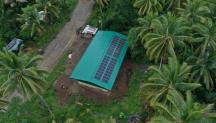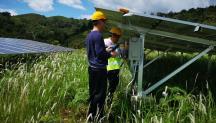

Renewable Energy Offers Solution to Reduce Carbon and Water Use in China’s Power Sector
Newsletter
Abu Dhabi, United Arab Emirates, 9 March 2016 – Scaling up renewable energy and introducing improved plant cooling technologies in China’s power sector can reduce water-intensity up to 42 per cent and emissions-intensity up to 37 per cent in 2030, according to a new joint brief by the International Renewable Energy Agency (IRENA) and China Water Risk.
The brief, Water Use in China’s Power Sector, examines the expected impact of China’s power sector on water and climate in 2030. It finds renewable energy is crucial to not only decarbonise the sector, but also to realise dramatic water-related benefits for the country.
“The global issues of water, energy and climate are completely interconnected,” said IRENA Director-General Adnan Z. Amin. “The only effective, immediately available solution to meet the rising demand for energy while limiting environmental impacts, is to scale up renewable energy. China has recognised this and must continue its leadership in the global energy transition.”
China has pledged to reduce carbon emissions by sourcing 20 per cent of primary energy consumption from non-fossil fuels by 2030. IRENA’s REmap analysis on China, released in late 2014, finds that achieving a 26 per cent share of modern renewables by 2030 is both technically and economically feasible. Doing so would not only reduce emissions-intensity of power generation by 37 per cent, but also reduce water-intensity by 42 per cent thanks largely to the water saving potential of solar photovoltaics (PV) and wind. During power-generation, solar PV requires far less water than thermal to produce the same amount of electricity. Wind power requires no water.
The water-saving potential of renewables is a key benefit for China. The power sector currently accounts for nearly 12 per cent of total national water withdrawals. What’s more, 45 per cent of China’s power generation facilities rely on fresh water and are located in areas of high water stress. With domestic electricity demand expected to rise 65 per cent by 2030, less water-intensive solutions are needed.
“Tomorrow’s water resources and carbon emissions must be considered in today’s energy decisions,” said Debra Tan, Head of China Water Risk.
“The magnitude of the benefits possible through renewable energy deployment reaffirms the importance of integrated water and energy decision-making in the power sector,” added Mr. Amin.
Download the brief: Here
Download the China REmap report: REmap
Download the Renewable Energy in the Water, Energy and Food Nexus report: Here




